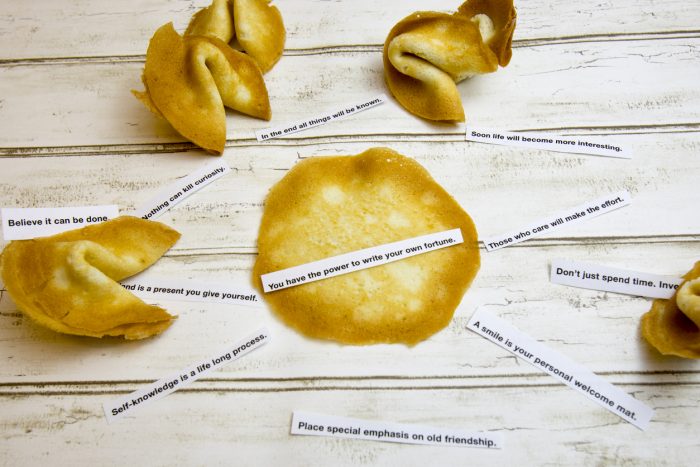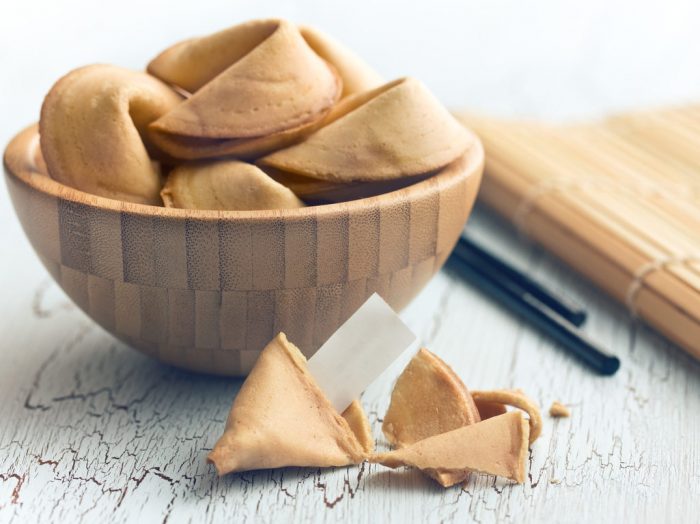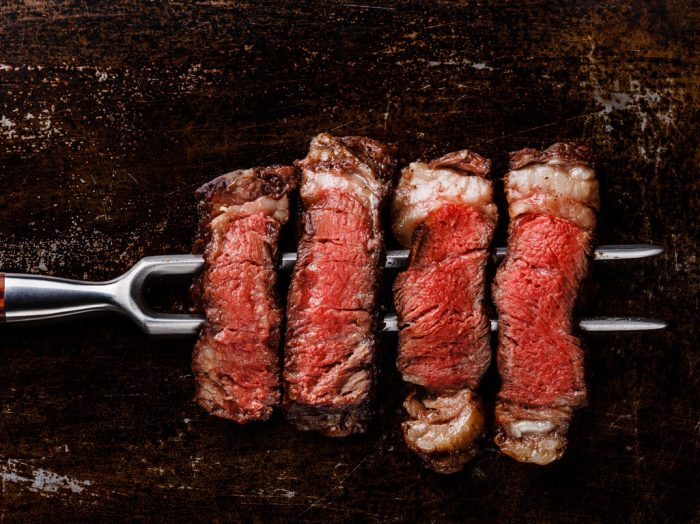When you eat Chinese food, do you sometimes receive fortune cookies? Even if you don’t like their taste very much, you probably can’t say no to them thanks to the magic of the fortune inside. But what’s their story? And how can you make some at home, to have fun with your guests?
The history of fortune cookies is kind of mysterious. Their origin is unclear, but it’s known that – although we thought they come from China – they’re an American invention. Immigrant groups in California have popularized fortune cookies in the early 20th century. Apparently, these small cookies were not even made by Chinese Americans, but they were most likely brought to America by Japanese immigrants in the late 19th or early 20th century. Their inventor still is a controversial topic.
They’re not a tradition in China, and they’re surely not Chinese, but we know that during the 19th-century, cookies that looked very much like the modern fortune cookies were made in Kyoto, Japan. Up to around World War II, fortune cookies had a different name: ‘fortune tea cakes’.
What’s a fortune cookie, anyway?
A fortune cookie is a crisp cookie that’s empty on the inside and has a piece of paper tucked in. The small paper has a ‘fortune’ written on it, and it’s usually an aphorism or a vague prophecy. The cookie itself is usually made from flour, sugar, vanilla, and sesame seed oil.
The Japanese version of the cookies differs in several ways: they’re a little bit larger, are made of darker dough, and they contain sesame and miso rather than vanilla and butter. They also have a fortune hidden inside. This kind of cookie – called ‘tsujiura senbei’ – is still sold in some regions of Japan.
Why are they mistaken for Chinese cookies? Because they’re often served for dessert in Chinese restaurants in the United States and other Western countries.

At first, fortune cookies were all made by hand, using chopsticks. But after the fortune cookie machine was invented, producing them became an industry. Now, they’re not only served in Chinese restaurants in the USA, but also in Brazil, Canada, France, India, Italy, Mexico, the United Kingdom, as well as other countries.
It’s said that they predict the future or are full of wisdom. At first, they contained Biblical sayings, or aphorisms from philosophers like Confucius, Aesop, or Ben Franklin. Now, the fortunes are either lottery numbers, jokes, advice, feel-good or mystifying messages.
The messages in the cookies are so important that you could say they’re the essence, the ‘main ingredient’. Very few people buy these cookies for their taste. The pleasure comes from the emotion you get when reading the messages inside. Even if the texture and flavor are not their strength, let’s see how you can make fortune cookies at home. Because they can make a nice impression at a party!
How to make fortune cookies
When you make fortune cookies, start with the ‘fortunes’. The paper strips should be small: about 3-inch/7.5 cm long and 1/2-inch/1.25 cm wide. Write your messages and then cut the strips. Make 15 fortunes for just as many cookies.
If you want to make fortune cookies at home, you need 2 egg whites, 1/2 teaspoon of vanilla extract, 1/2 teaspoon of almond extract (optional), 3 tablespoons of vegetable oil, 8 tablespoons of flour, 1 1/2 teaspoons of cornstarch, 1/4 teaspoon of salt, 8 tablespoons of sugar, and 3 teaspoons of water.
Preheat the oven to 300 degrees Fahrenheit/150 degrees Celsius. Beat the egg whites in a bowl, add the vanilla and almond extracts, then add vegetable oil. Add the dry ingredients (flour, cornstarch, sugar, and salt) to a separate bowl, mix, and then stir the water in it. Add this mixture to the egg, vanilla, and almond mixture. Mix them together to make a smooth batter.

Using a tablespoon, place small quantities of batter onto a cookie sheet, spacing them around 2 or 3 inches (5 – 7.5 cm) apart. Shake the baking sheet back and forth, side to side, until each tablespoon of batter forms into a circle 4 inches (10 cm) in diameter.
Bake them for 15 minutes, or until the outer half turns to a golden-brown color, and they are easy to remove from the baking sheet. Remove the cookie with a spatula, and flip it over in your hand. Place the fortune in the middle of the cookie. Then, form the fortune cookie shape: fold the cookie in half, then use the rim of a glass or a spoon to gently pull the edges downward and create the well-known fortune cookie shape.
Place the finished cookie in the cup of a muffin tin so that it keeps its shape. Continue with the rest of the cookies. That’s all!






